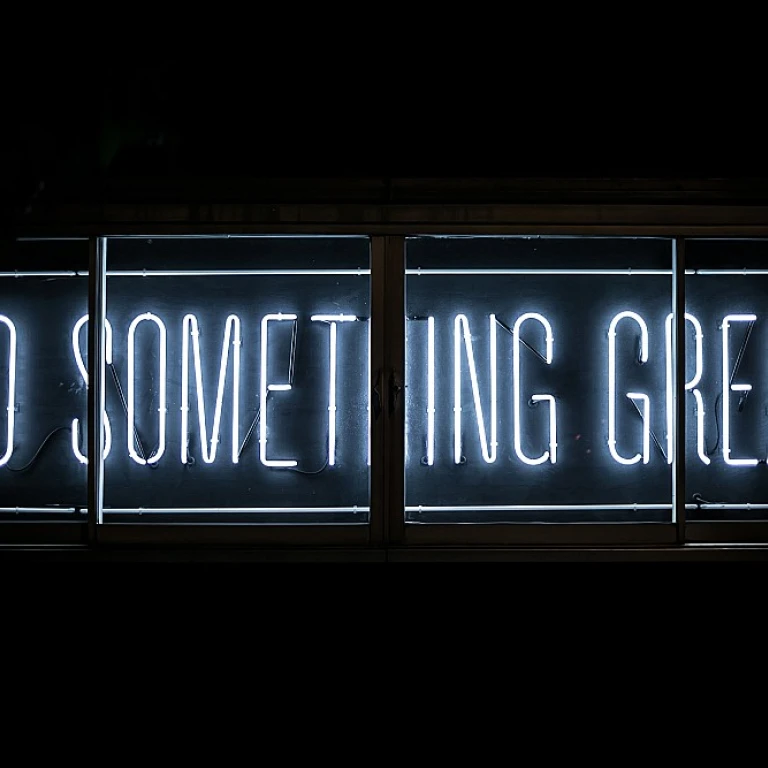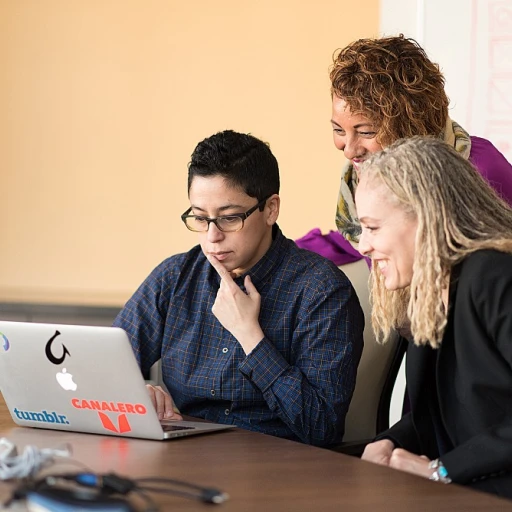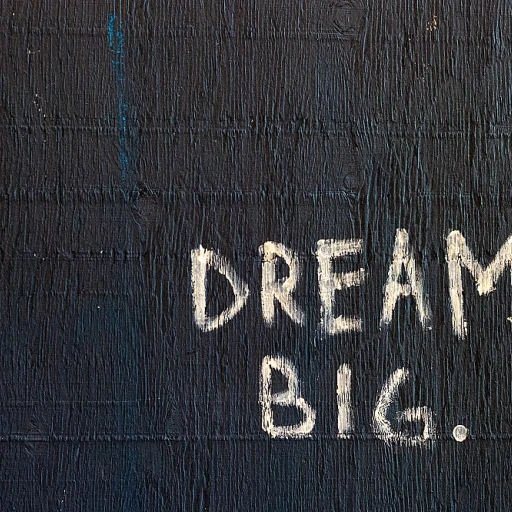
Understanding the Importance of Diversity in Employer Branding
In today's competitive landscape, companies are acknowledging the vital significance of diversity, equity, and inclusion (DEI) in their employer branding strategies. Recognizing the importance of diversity is no longer just a buzzword or a sociopolitical topic; it's a business imperative that enhances the overall workplace culture and attracts top talent across various race, ethnicity, and gender identities.
The Business Case for Diversity
Employers seeking to build a dynamic culture must understand the multifaceted benefits of diversity. Research has consistently shown that diverse teams are more innovative and productive. By fostering an environment of inclusion and equity, organizations leverage a diverse set of experiences and perspectives. This not only drives creativity but also positions them strategically in the market.
Challenges with Homogeneity and Unconscious Bias
Organizations often struggle with unconscious biases that can lead to a homogenous workforce. This limits the variety of viewpoints that can contribute to the company's growth. Addressing such biases through diversity training and DEI initiatives is crucial for organizations to fully benefit from a diverse workforce.
Intentional Inclusion Efforts
An intentional approach to inclusion diversity requires more than sporadic efforts. Companies need to actively seek diverse perspectives and cultivate a company culture that appreciates and celebrates diversity across gender, mental health, sexual orientation, and other defining facets of identity. This deliberate action fosters an inclusive environment where all employees feel valued.
To delve deeper into the evolving role of diversity in employer branding and understand how it solidifies a company’s reputation, consider unlocking the potential of employer branding through strategic DEI focus.
Current Trends in Diversity Topics
Current Focuses in Diversity Efforts
In recent years, a wide array of diversity topics have gained prominence in the conversation around employer branding. Companies are now more aware of the necessity to foster a workplace culture that is both inclusive and equitable. This shift is reflected in several current trends. Firstly, there's a growing emphasis on ensuring gender diversity and equity in the workplace. Organizations are undertaking initiatives that promote gender parity, with particular attention to elevating women into leadership roles and addressing wage gaps. In addition to gender, race and ethnicity are also critical components of the diversity dialogue. Businesses are increasingly acknowledging the unique challenges faced by different racial groups and are implementing strategies to create an inclusive environment where everyone, regardless of their background, can thrive. Mental health and well-being have emerged as vital diversity topics. As the stigma surrounding mental health diminishes, companies are recognizing the importance of supporting employees' mental well-being as part of overall diversity, equity, and inclusion (DEI) strategies. Generational diversity is another area gaining attention. Organizations benefit from a workforce that spans various age groups, with each contributing distinct strengths and experiences. Incorporating inclusive language and creating intentional inclusion programs ensures that diverse age groups work harmoniously together. Finally, initiatives addressing sexual orientation and gender identity stand at the forefront of DEI strategies. By fostering a supportive environment for LGBTQ+ individuals, companies demonstrate their commitment to diversity and create a culture where all employees feel comfortable sharing their authentic selves. The implementation of these diversity topics not only attracts a broader talent pool but also enhances a company’s brand reputation in the competitive market. For a deeper exploration of how these initiatives can unlock the potential of employer branding, explore our insights here.Challenges in Implementing Diversity Initiatives
Obstacles to Implementing Diversity Best Practices
Integrating diversity and inclusion within an organization's employer brand can be met with several challenges. One significant hurdle is the existing company culture. Many organizations have deep-rooted cultures that can be resistant to change, making it difficult to create a more inclusive and diverse environment. Overcoming this requires intentional inclusion efforts and a commitment to equity and diversity from leadership.
The challenge of recognizing and addressing unconscious bias is another critical factor. These biases can subtly influence hiring decisions, undermine diversity initiatives, and create barriers for groups based on gender, race ethnicity, sexual orientation, and other diversity topics. To address this, companies can invest in diversity training and DEI training programs that help employees become more aware of their biases and learn inclusive language and behavior.
Another major constraint is the lack of representation in leadership positions, particularly women and minorities. Without diverse experiences and perspectives in decision-making roles, companies may struggle to genuinely support diversity initiatives or even identify areas that require improvement. Human resources departments can implement bystander intervention training to foster an environment where people feel empowered to share their experiences and speak up against inequity.
Moreover, formulating a good job description that attracts a diverse candidate pool is no easy feat. It's crucial to ensure that the language used is not only inclusive but also appealing to people from various backgrounds. This can be part of broader generational diversity efforts that involve tailoring recruiting strategies to appeal to different age groups and diverse cultures.
These challenges can be perceived as barriers but with conscious effort and strategic planning, organizations can not only build a more diverse workplace but also unlock the potential of a strong employer brand. For more on how to overcome these obstacles, the enhancing workforce performance through employer branding blog offers insights into innovative solutions.
Successful Diversity Strategies in Employer Branding
Proven Approaches to Diversity Success
Measuring the Impact of Diversity on Employer Branding
Evaluating the Effectiveness of Diversity Efforts in the Workplace
In the ongoing journey of promoting diversity and inclusion in the workplace, measuring the impact of these initiatives on employer branding becomes pivotal. For organizations striving towards an inclusive culture, it's crucial to gauge what works and what doesn’t, ensuring their diversity strategies not only align with company values but also achieve tangible results.
One approach to evaluating the effectiveness of diversity efforts is through the use of clear metrics and data collection. Companies can track a range of diversity topics, such as the representation of women and various race ethnicity groups at different levels of the organization. They can also assess cultural equity and inclusion diversity by examining their workplace policies on gender identity and sexual orientation inclusivity.
- Employee Surveys: Conducting anonymous surveys allows employees to share their experiences and perceptions regarding workplace diversity and inclusion. These insights can highlight areas of progress and those needing attention.
- Diversity Audits: Regular audits of hiring practices, job description language, and training programs such as dei training and diversity training reveal unconscious bias issues that may hinder diversity equity goals.
- Retention Rates: Monitoring whether diverse groups of employees stay with the company can indicate the success of inclusion initiatives. High retention among these groups often reflects a supportive and inclusive work environment.
Incorporating bystander intervention and inclusion training can further bolster these efforts by fostering an environment where employees feel empowered to act against instances of bias. Companies should also consider the role of human resources in continually refining these strategies to maintain a thriving diverse workforce.
Ultimately, the success of diversity initiatives can manifest in a richer company culture and enhanced employer branding, allowing organizations to attract a broader range of talent. By prioritizing diversity inclusion and equity inclusion in their strategies, companies position themselves as leaders in creating a dynamic and supportive workplace for all employees. The future of inclusive language and intentional inclusion in the workforce will continue to evolve, setting new standards in employer branding.
Future Directions for Diversity in Employer Branding
Embracing Inclusion and Equity in Future Workplaces
As organizations continue to evolve in the realm of employer branding, the future of diversity initiatives will undoubtedly focus on deeper integration of inclusion and equity in the workplace. With a growing awareness of the importance of diversity inclusion, companies are beginning to explore fresh avenues to foster a more inclusive culture.
One anticipated trend is a greater emphasis on fostering intentional inclusion. This involves moving beyond rhetoric to establish tangible practices that make all employees, regardless of their race ethnicity or gender identity, feel valued and respected. Integrating inclusive language in company communications and making conscious efforts towards understanding unconscious bias can significantly impact the company’s reputation.
Moreover, the approach to dei training is shifting. Future frameworks might focus more on continuous learning and real-life application rather than single-session workshops. Topics like bystander intervention and understanding mental health challenges are becoming indispensable components of comprehensive diversity training.
Another critical factor will be the ability for organizations to adapt to generational diversity. By harnessing the unique perspectives and experiences that different age groups bring, companies can tap into a more diverse pool of ideas, enhancing both innovation and internal cohesion. Addressing issues such as sexual orientation and equity inclusion holistically will be paramount for future-focused organizations.
Looking ahead, organizations must not only implement these strategies but also measure their efficacy. Assessing the real-world impact of these initiatives on the workplace and ensuring they align with a company's overarching goals will be key. Employers are increasingly expected to cultivate an environment where diversity is not just a buzzword, but a foundational element of their company culture.













